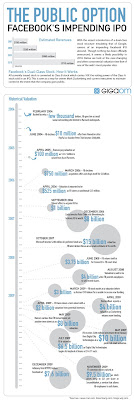Tesco - a retail and general merchandising store chain from the UK succeeded to become the third largest retailer based on revenue after Wal-Mart and Carrefour. The company has a long history behind it, which did not compromise its constant development and reorganization. Some of the elements that helped Tesco to differentiate itself from the competitors include:
- Moving stores to the outskirts of the cities, allowing larger spaces and cheaper prices.
- Self-service model. Savings on human resources. Plus customers usually tend to buy more products when self-served.
- Introduction of the club card, increasing customer loyalty.
- Different types of stores in the store portfolio that may target different types of customers. For example, families may predominantly prefer to shop on the weekend, buying a lot of products at once, at cheaper prices. Whereas occasional buyers may go to Tesco Metro or One Stop, which are closer located but do not have the same variety of products.
Wednesday, June 23, 2010
Monday, June 14, 2010
Should companies adapt to ERP or the other way around?
There are factors which suggest that we probably should not pose a question either...or.
First, the organizational adaptation to the package is important. The companies should assess their fit to ERP system and create a plan for the change management. The organizational fit to ERP rests on three main pillars: data, process and user fit. System implementation is successful when these variables are controlled by the change management. The combination of different data samples, processes and users is enormous; it is just impossible to create a perfect match for every combination.
Second, ERP packages should fit at least most common scenarios plus be easily adaptable to the rest. That's where the world is going - creating products that are flexible and adjustable in meeting clients' needs. The success factor of a product relates to its ability to interact with the users and evolve over time.
For example, ERP was adapted for the automotive industry to match sector-specific behaviors: customer orders, dispatch notes, pricing, invoicing, capacity estimates, etc. How many industries are out there that may benefit from a pre-adjusted platform? Probably too many and this practice is worth to pursue.
First, the organizational adaptation to the package is important. The companies should assess their fit to ERP system and create a plan for the change management. The organizational fit to ERP rests on three main pillars: data, process and user fit. System implementation is successful when these variables are controlled by the change management. The combination of different data samples, processes and users is enormous; it is just impossible to create a perfect match for every combination.
Second, ERP packages should fit at least most common scenarios plus be easily adaptable to the rest. That's where the world is going - creating products that are flexible and adjustable in meeting clients' needs. The success factor of a product relates to its ability to interact with the users and evolve over time.
For example, ERP was adapted for the automotive industry to match sector-specific behaviors: customer orders, dispatch notes, pricing, invoicing, capacity estimates, etc. How many industries are out there that may benefit from a pre-adjusted platform? Probably too many and this practice is worth to pursue.
Monday, June 7, 2010
Facebook's nearest future

Before jumping into the future of Facebook (FB), let's analyze the history and the current positioning.
Recently, FB was valuated at $14 billion dollars, an impressive amount for a social platform. Its common stock increased from $25 per share to $32 on the second market, an independent marketplace for illiquid assets, in a matter of months or even days. The historical valuation on the left, courtesy Fast Company, gives an appreciation of FB growth rates.
While some information sources suggest that FB may become an Initial Public Offering (IPO), the company is highly attractive for the private investors. The biggest ones are Microsoft Corp and Digital Sky Technologies, investing $240 million and $200 million respectively into FB. In this light, Reuters points out that FB most likely holds a strategy of selling the shares in private placements instead of going public.
From my perspective, the business model of FB includes, but most likely not limited to:
- Self-service ads
- Brand ads
- Virtual products
In a two-year time, I expect the number of users to stabilize, indicating market's saturation. We all sign up for FB, admire it at some point, become really active users, get bored with it, eventually check from time to time. However, it still stays as a great communication tool. Maybe virtual products are not that relevant and innovative, but the ads are definitely flourishing (competing with Google, btw).
FB itself aims at transferring the internet into more user-friendly environment by informing the sites on user preferences taken from the users' FB profiles. Not very private, but probably efficient:) In lines with our last IS class and the future.
Subscribe to:
Comments (Atom)